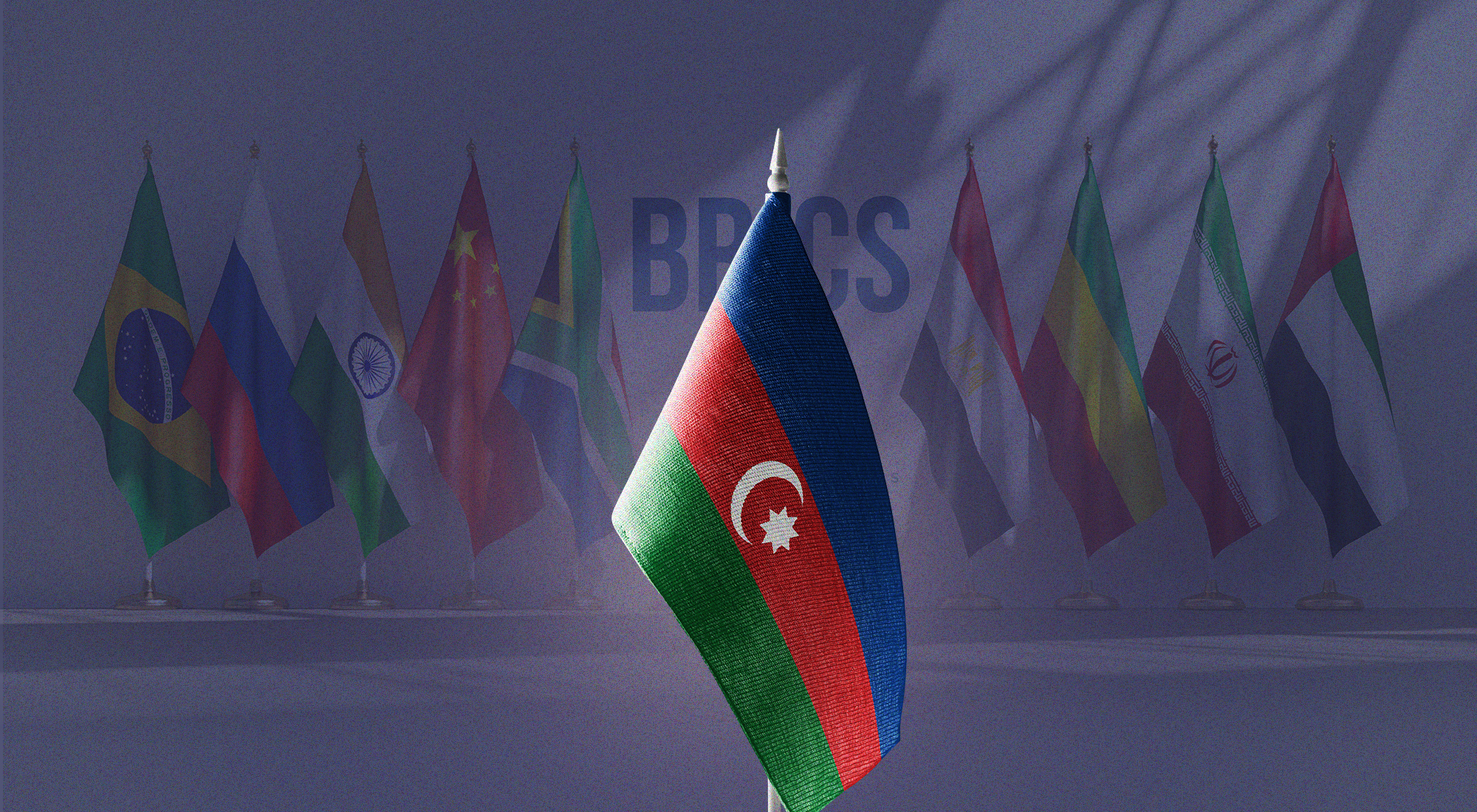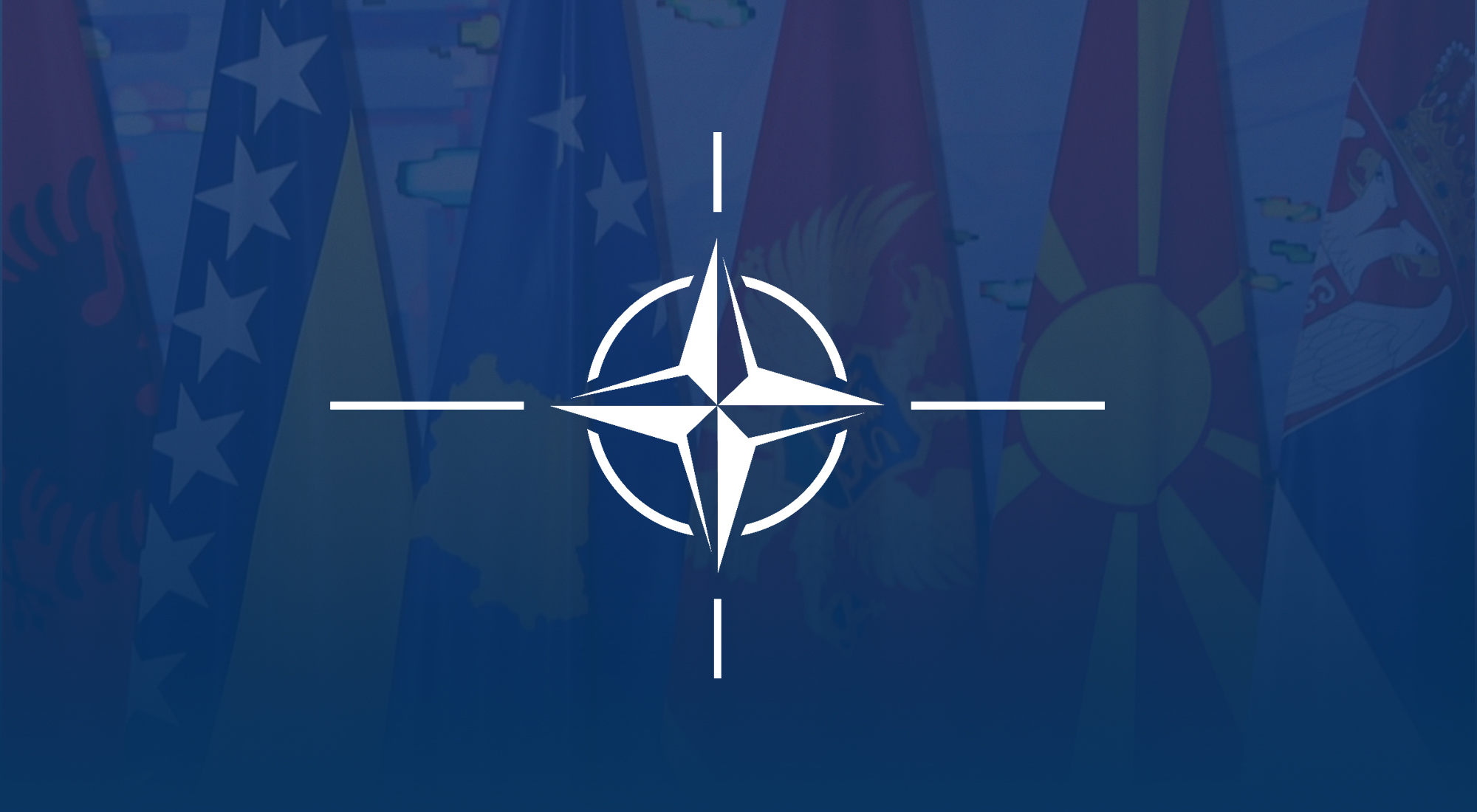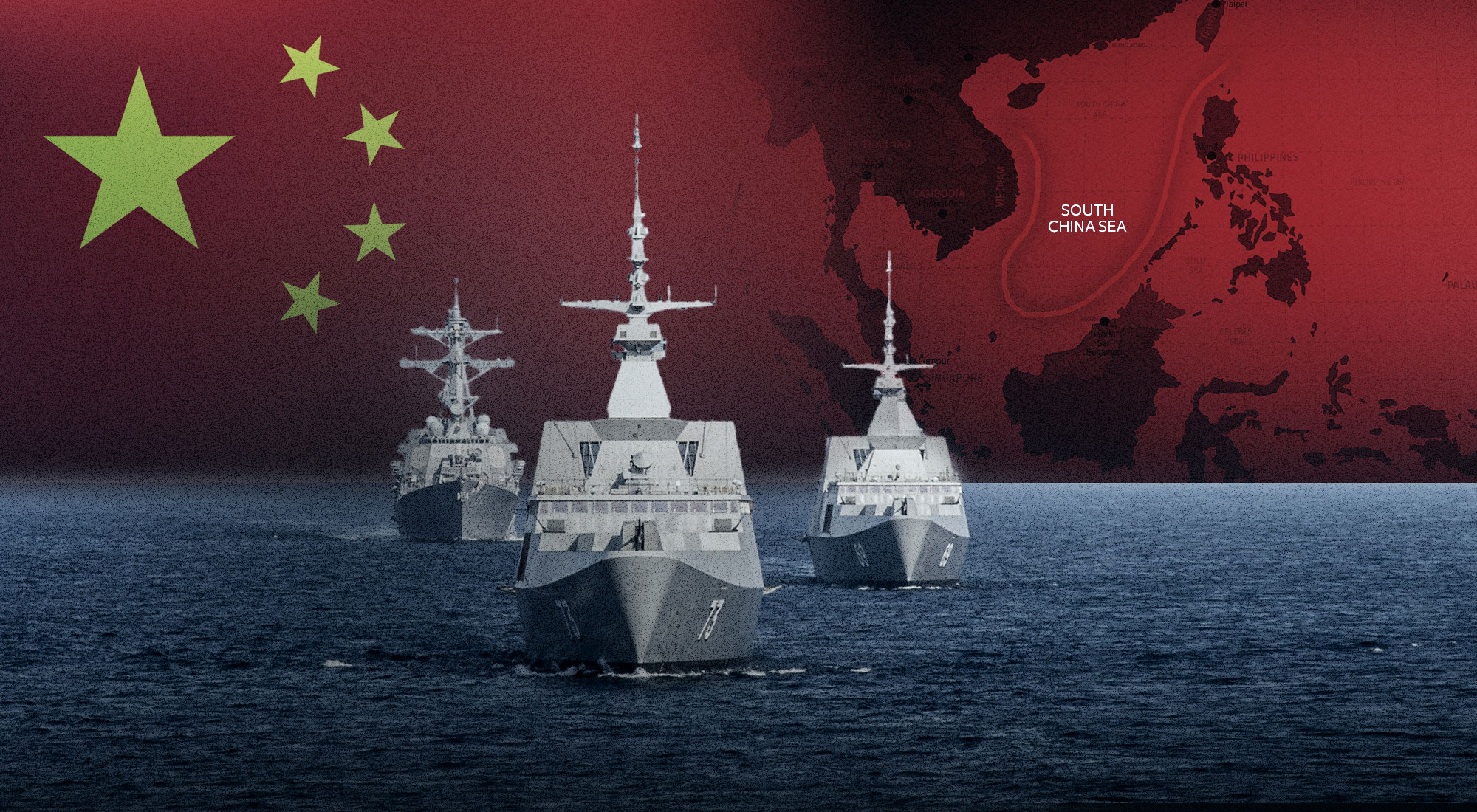On 20 August 2024, Azerbaijan announced its interest in joining the BRICS, an economic forum established in 2009 and named after its founding members—Brazil, Russia, India, China and South Africa. Egypt, the UAE, Ethiopia, and Iran accepted the invitation to join the group on 1 January 2024.
Azerbaijan is among nearly two dozen countries that have expressed an interest in joining the organization since 2022. In August 2023, during the 15th annual summit in Johannesburg, the group extended invitations to Saudi Arabia and Argentina, and while the Argentine government under President Javier Milei decided on 10 December 2023 not to proceed in this regard, Saudi Arabia has participated in BRICS activities as an observer without formalizing its decision on the membership.
A key question is what Azerbaijan expects to achieve by joining this forum in terms of political and economic spheres and how this decision fits into the country’s foreign policy objectives. Political developments in the Caucasus region, the Caspian Sea, the Middle East and the wider Eurasian continent have reshaped the axes of relations and shifted the regional balance of power, which require closer attention to emerging trends and complexities. As Azerbaijan has grown more confident after the Karabagh War (2020-2022), its decision to join BRICS could have a major impact on Eurasian transport routes and energy geopolitics—two issues of growing importance in the era of great power rivalry between the U.S. and China.
Formation of BRICS+
Since the foundation of the BRICS forum in 2009[1]—then known as BRIC, since South Africa (the letter ‘S’ in the acronym) joined in 2010—the perception of the group was either as having an “anti-Western” agenda that could upend global governance and institutions to the detriment of the U.S.-led, rules-based liberal world order or as a forum that provides a platform for diverse countries but with almost no impact on international institutions, where the outcome is reduced to a set of immaterial announcements or purely statements of intent. These misleading, extreme views miss the real impact of the forum and reflect ideologically driven positions rather than the essence of motives behind BRICS expansion in an increasingly multipolar world.
The macroeconomic, demographic, and geographical data speak for themselves. The BRICS countries account for 35% of global GDP in purchasing power parity (PPP) terms, 45% of the world’s population, three nuclear-armed powers (Russia, China and India), and economies with high growth potential as well as vast natural resources, especially in mining and energy sectors.
However, there are major asymmetries among the group’s members, a fact that has widened and deepened with the accession of new ones on 1 January 2024. Apart from demographic variations like those among India, China, and the UAE, significant differences in levels of economic development, industrial capacity, and military capabilities set them apart. This affects their collective leverage in global governance and decision-making structures such as the UN Security Council.
Second, participation in the forum does not erase existing differences, rivalries, or conflicts among the members. Although on a path to de-escalation, tensions between India and China, between Egypt and Ethiopia, or between Saudi Arabia and Iran, continue to exert pressure against efforts to set a unified agenda across economic and geopolitical fronts. Despite frustrations due to power asymmetries and tensions between members, the forum has led to the coordination of policies and initiatives that have a positive impact on intra-BRICS relations and increase the bloc’s relevance in the international system.
Initiatives such as the Shanghai-based New Development Bank (NDB), the establishment of a Contingent Reserve Arrangement (CRA), the proposal to trade in local currencies (de-dollarization), or the goal to create a common currency show that political and economic coordination among member states could lead to structural changes in the long run and help reduce trade imbalances, income inequality, and inequities in access to finance. This is a clear manifestation of the BRICS group’s advocacy to move forward on key aspects of reforming international economic relations and have a louder voice in addressing the disparities between the Global South and the North.[2]
Political implications of Azerbaijan’s application
It is a commonsense principle that “countries do not move”, i.e., geopolitical reality is the basis of any foreign policy. In this sense, Azerbaijan has implemented a multi-vector foreign policy, trying to diversify its relations, institutional membership, and initiatives to achieve a balance based on its interests and to develop its capabilities. Several instances of this quest for diversification in Azerbaijan’s foreign relations are the joint declaration with China on 3 July 2024 referring to the establishment of strategic partnership,[3] the Shusha declaration with Turkey in June 2021 to establish a defense alliance,[4] the declaration of bilateral partnership with Russia in February 2022,[5] the memorandum of understanding on energy cooperation with the European Union (EU) of July 2022,[6] and the application for observer status in the Shanghai Cooperation Organization (SCO) in 2024.[7] Azerbaijan’s acceptance as a full member of the Organization of Eight Islamic Countries for Economic Cooperation (known as the D-8 and comprising Bangladesh, Egypt, Indonesia, Iran, Malaysia, Nigeria, Pakistan and Turkey) at the Cairo Summit in December 2024 is another example of this foreign policy orientation.
Azerbaijan’s decision to apply for BRICS membership should be viewed within this framework. The logic, beyond what has been pointed out, is amply justified, considering that both Russia and Iran are neighboring states and members of the forum. In the Caspian region, Kazakhstan prefers to keep on hold in short of BRICS membership, although it has taken steps in this direction. Turkey has expressed a strong interest, although in a balanced way without overemphasizing this desire, due to its multi-vector foreign policy scheme and geopolitical rebalancing, which includes NATO membership and candidacy to join the EU. Within Azerbaijan’s borders, there are more BRICS members or candidates than otherwise.
Azerbaijan’s commitment to the development of the “Middle Corridor” (formally known as the Trans-Caspian International Transport Route or TCITP) would greatly benefit from deepening its relations with the region, which is host to members or potential members of the BRICS. From Baku’s perspective, the decision to join the BRICS is fully justified considering its interests and the regional balance of power. In this sense, China’s growing interest in the “Middle Corridor”[8] is relevant, not only because of geopolitical considerations but also specific needs arising from the impact of the Houthi attacks on maritime trade in the Red Sea.
With the “Maritime Silk Road” route disrupted and the “Northern Corridor” through Russia no longer the preferred trade route for the China-Europe connection, the “Middle Corridor” and hence Azerbaijan emerged as essential links in the Eurasian continental trade. In 2023, the use of this corridor reached 2,764,000 tons, a much higher figure than 784,000 tons in 2022.[9] Instability from the Russia-Ukraine and Israel-Gaza conflicts has also led the European institutions to clearly support the development of this alternative land corridor.
Economic implications of Azerbaijan’s application
For two decades, Azerbaijan has pursued a policy aimed at becoming an energy and transport hub in the Eurasian continent, where, without neglecting the central role of its oil and gas sector, the country moves toward economic diversification based on services and logistics infrastructure, taking advantage of its geopolitical position and availability of financial resources. Azerbaijan’s rich set of capabilities and connections have allowed it to develop oil and gas pipeline projects, and multimodal transport infrastructure (ports, railways) connecting Central Asia, the Caucasus, and the Middle East. There is potential within BRICS for collaboration on the transition to clean fuels, especially with India and China, which have growing energy needs. Also, collaborations with BRICS countries like China in ICT infrastructure and digital economy can bring potential synergies in AI, 5G technologies, and digital trade platforms. This might be extended to defense technology transfers that could occur within the BRICS framework.
Russia and Iran, two neighbors of Azerbaijan, are also members of the BRICS; others beyond, such as China and India, which have close economic ties with European countries, necessarily consider the Caspian Sea and the South Caucasus as key conduits to reach European markets; and another country with which Azerbaijan has very close relations in all areas, such as Turkey, has also applied to join the BRICS. Ankara has a rich experience of productive relations with Baku in the fields of infrastructure, energy, defense, and more recently soft power/cultural ties through the Organization of Turkic States (OTS). Baku can play a role in establishing a trade mechanism for local currencies in the region among its partners, particularly in transactions involving hydrocarbons.
So, whether it is the Middle Corridor, the International North-South Transport Corridor (INSTC) or China’s Belt and Road Initiative (BRI), there are potential benefits for Azerbaijan in all these projects. In the case of the INSTC, which goes through Iran, the Russian cabinet approved the agreement signed with Azerbaijan in December 2024, which provides for rail transport between the two countries with a minimum of 5 million tons per year from 2028 onward, with the possibility of up to 15 million tons per year. Both Russia and China, for various reasons, need Azerbaijan to diversify or secure their multimodal transport routes. It is possible to see the geopolitical importance of Azerbaijan’s inclusion in the BRICS, as the country could become a link connecting these important partners in the Eurasian transport infrastructure.
Cooperation among BRICS members has increased in relevant areas such as energy supply, trade, and finance, thus creating opportunities for a mid-size pivotal country like Azerbaijan, which is located right at the heart of intercontinental trade routes. Baku is attempting to move toward a “greener” economy through a partnership between its state oil company SOCAR and major investors such as the UAE’s Masdar.[10] As trade agreements between members lead to higher volumes of shipments, and Eurasian infrastructure ensures connectivity between China and Europe, Azerbaijan could see its membership in BRICS add to the already existing advantage derived from its geopolitical position as a linchpin between power centers. Upgrades to major infrastructure projects such as the Baku-Tbilisi-Kars railway or the building of a potential Zangezur corridor could enhance Azerbaijan’s appeal to BRICS.
Conclusion
Addition of new members to BRICS, while potentially complicating the decision-making system due to the need to reach consensus positions without formal institutional structures, will also help the group to be seen more as a forum of countries that, while diverse, are pursuing initiatives to deepen essential aspects of their economic and political partnerships. It is not a forum of anti-Western tendencies, and tensions or conflicts between some member states and the U.S. or the EU are manageable to a certain extent. The (potential) participation of U.S. allies, even in such sensitive areas as defense, like India, Saudi Arabia, Turkey, and the UAE, is an example of this concept of “compartmentalization” in foreign policy, which is a more pragmatic and realistic approach than that of an overtly anti-Western stance.
Azerbaijan’s multi-vector foreign policy sees its membership in BRICS as just another chapter of this policy. An increasingly multicentered world requires flexible, reliable partners to jointly resolve the most pressing, shared economic issues such as reducing poverty and reforming global financial architecture—and this is the case for Azerbaijan. A spiral of cooperation is emerging in which different actors—be it Russia, China, the U.S., or Turkey—for different reasons and considerations, even despite differences, are keen to improve and strengthen their relations with Baku. Azerbaijan’s membership in BRICS would be mutually beneficial. Its geopolitical position, infrastructure, financial power, and oil and gas resources would be key elements that could help Azerbaijan’s appeal for BRICS in a shifting regional landscape.
References
Çubukçuoğlu, Serhat Süha, “New Horizons for BRICS in 2024,” TRENDS Research & Advisory, January 6, 2024, available at https://trendsresearch.org/insight/the-new-horizons-for-brics-in-2024/.
Guliyev, Vusal, “New Alliances: BRICS and Azerbaijan,” September 9, 2024, Baku Reseacrh Institute, https://bakuresearchinstitute.org/en/new-alliances-brics-and-azerbaijan/.
Huseynov, Vasif, “Azerbaijan Applies for BRICS Membership,” Eurasia Daily Monitor 21 no. 149, October 16, 2024, Jamestown Foundation, https://jamestown.org/program/azerbaijan-applies-for-brics-membership/.
Nag, Krishna, “BRICS Set to Benefit from Azerbaijan’s Bid for Membership,” International Policy Digest, October 6, 2024, https://intpolicydigest.org/brics-set-to-benefit-from-azerbaijan-s-bid-for-membership/.
Sukhankin, Sergey, “Kazakhstan Pauses Prospective Application to BRICS,” Eurasia Daily Monitor 21 no. 154, October 23, 2024, Jamestown Foundation, https://jamestown.org/program/kazakhstan-pauses-prospective-application-to-brics/.
[1] “History of BRICS,” https://infobrics.org/page/history-of-brics/.
[2] Hamdullah Baycar, “The Gulf in BRICS: Reshaping Geopolitical Landscapes,” Gulf International Forum (blog), November 6, 2023, https://gulfif.org/the-gulf-in-brics-reshaping-geopolitical-landscapes/.
[3] Reid Standish, “Azerbaijan Moves Closer Toward China And Courts Investment Through New Deals,” RFERL, October 24, 2024, https://www.rferl.org/a/azerbaijan-china-brics-sco-corridor-russia/33088846.html.
[4] Azerbaijan Permanent Representation on the Council of Europe, “Shusha Declaration on Allied Relations between the Republic of Azerbaijan and the Republic of Turkey,” June 21, 2021, https://coe.mfa.gov.az/en/news/3509/shusha-declaration-on-allied-relations-between-the-republic-of-azerbaijan-and-the-republic-of-turkey.
[5] Presidency of Azerbaijan Website, “Declaration on allied interaction between the Republic of Azerbaijan and the Russian Federation,” February 22, 2022, https://president.az/en/articles/view/55498.
[6] European Commission, “EU and Azerbaijan enhance bilateral relations, including energy cooperation,” Press comunique, July 17, 2022, https://ec.europa.eu/commission/presscorner/detail/en/ip_22_4550.
[7] “Azerbaijan expects to become SCO observer – Foreign Ministry,” INTERFAX, July 4, 2024, https://interfax.com/newsroom/top-stories/104014/.
[8] Yunis Sharifli, “From Disinterest to Strategic Priority: China’s Changing Approach to the Middle Corridor”, TRENDS Research & Advisory, November 24, 2024, https://trendsresearch.org/insight/from-disinterest-to-strategic-priority-chinas-changing-approach-to-the-middle-corridor/.
[9] Ibid.
[10] Orkhan Bagirov, “Azerbaijan’s BRICS Application Seeks to Strengthen Its Position in Global Economy,” The Jamestown Foundation, October 23, 2024, https://jamestown.org/program/azerbaijans-brics-application-seeks-to-strengthen-its-economy/.










